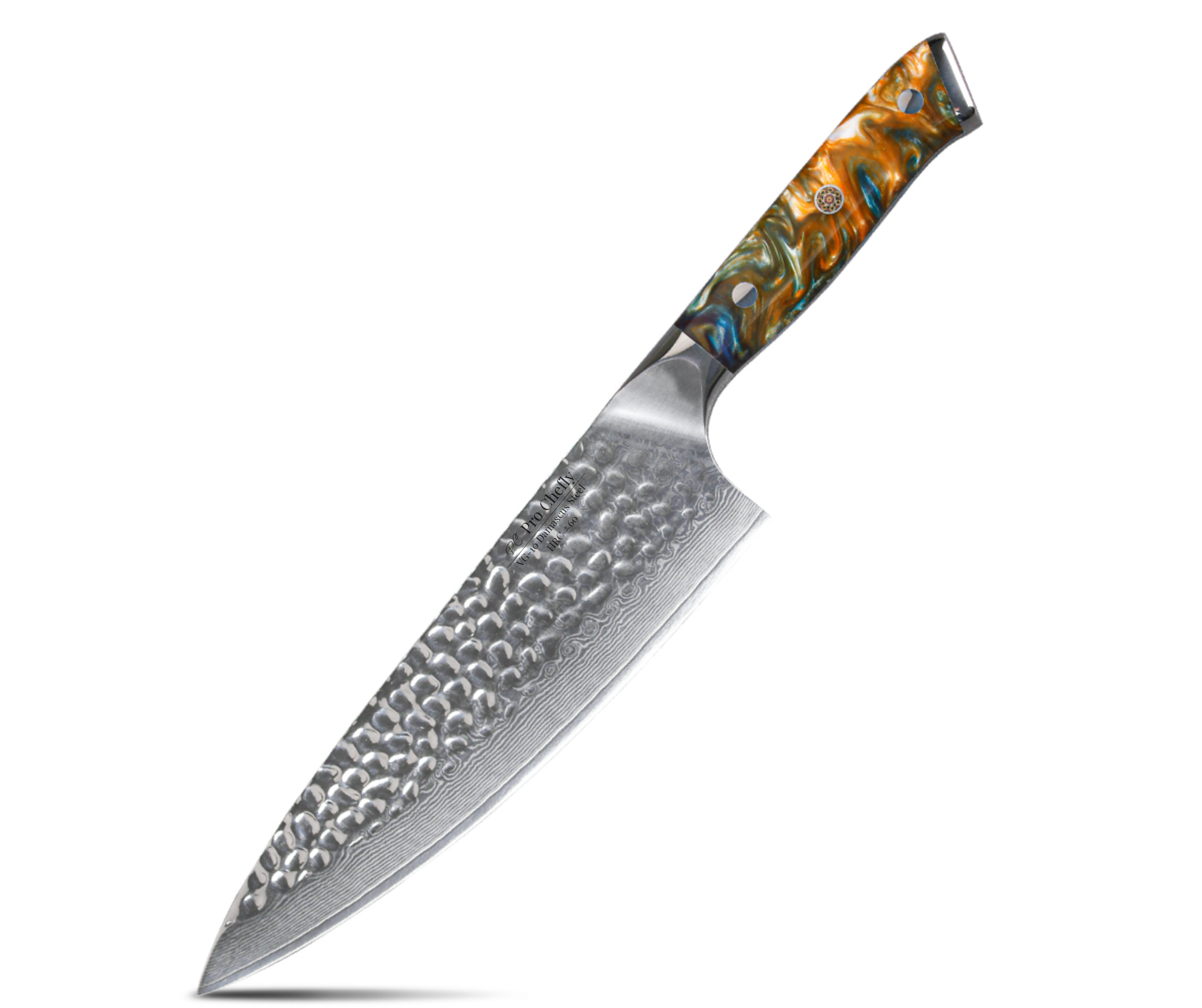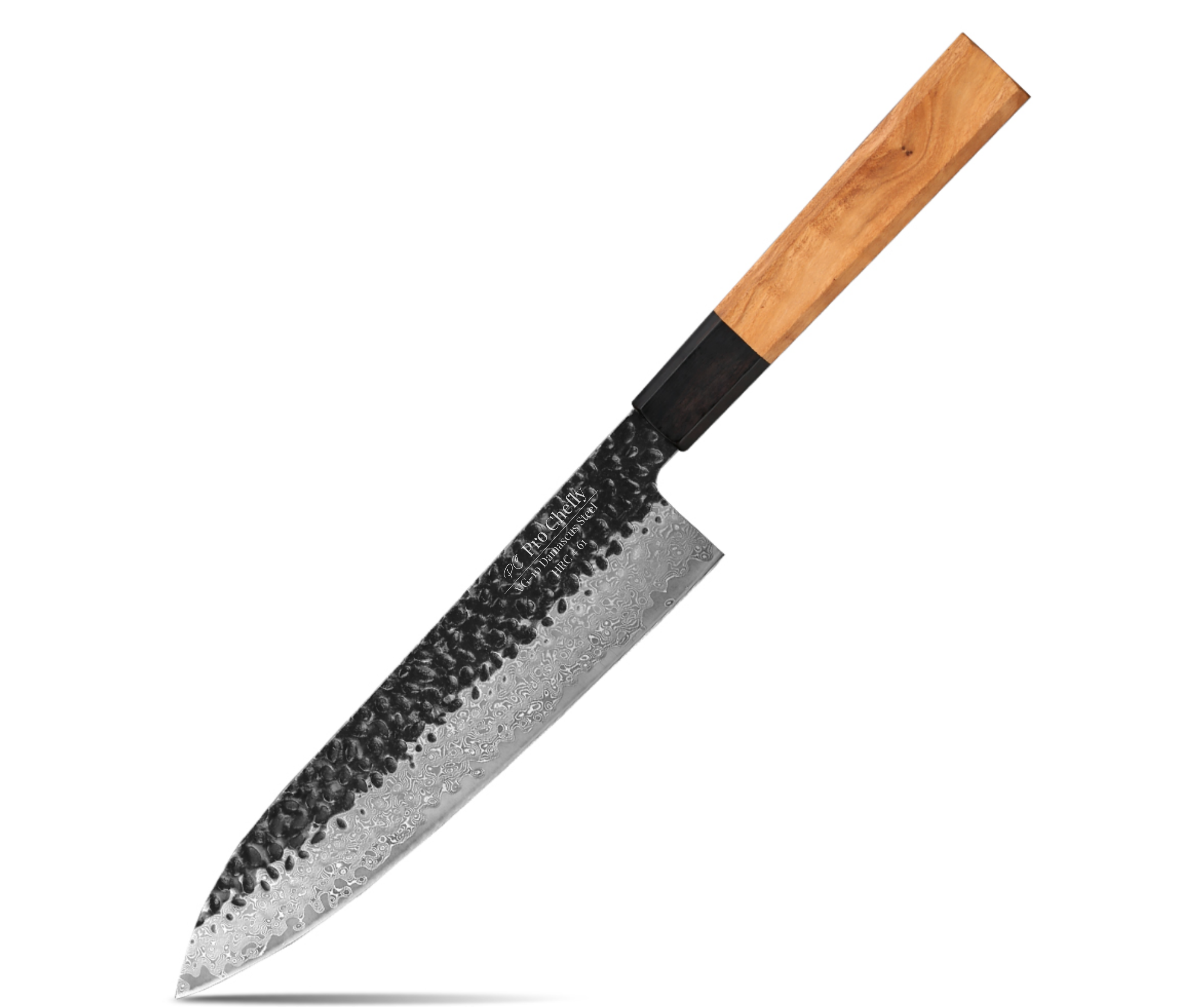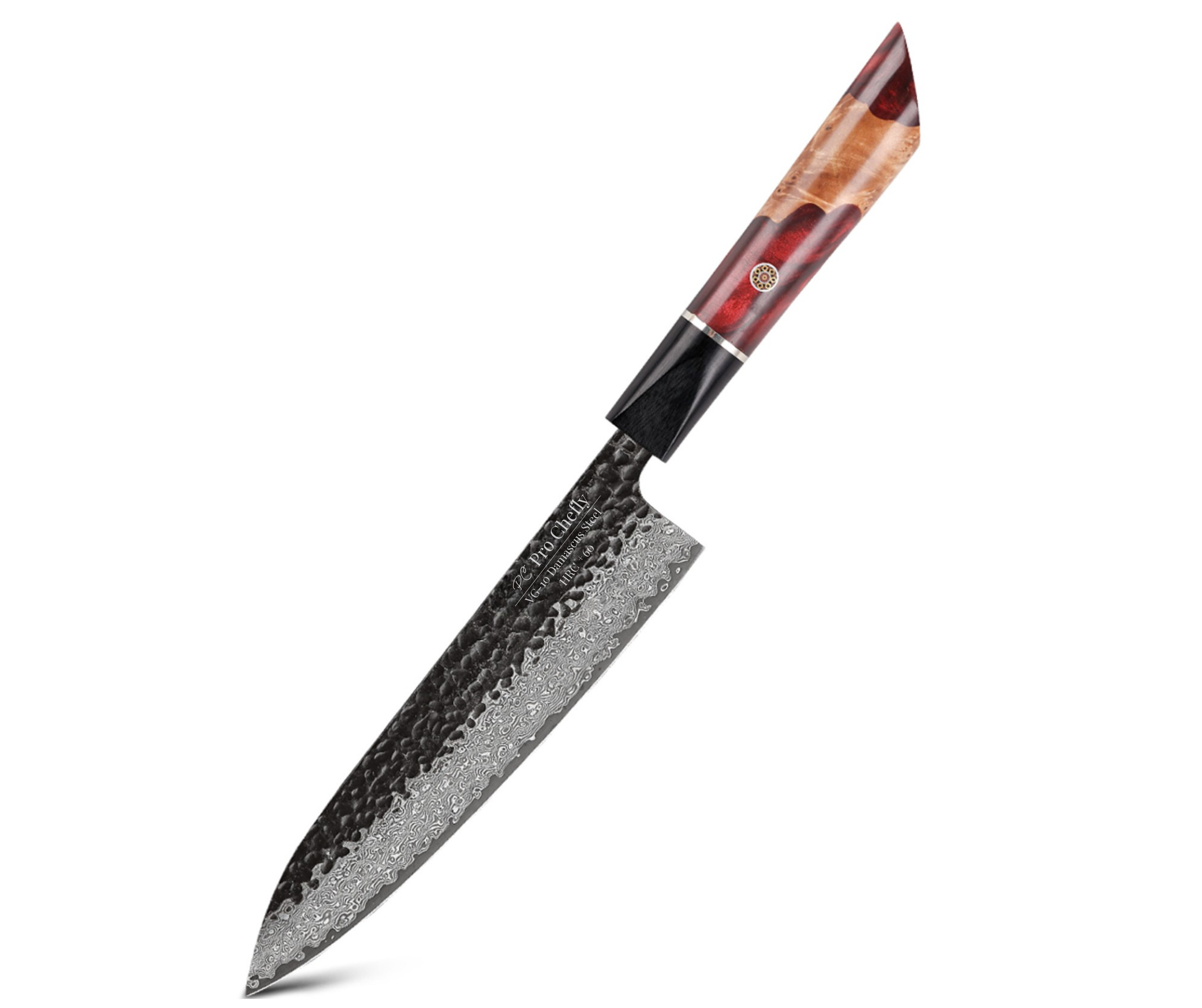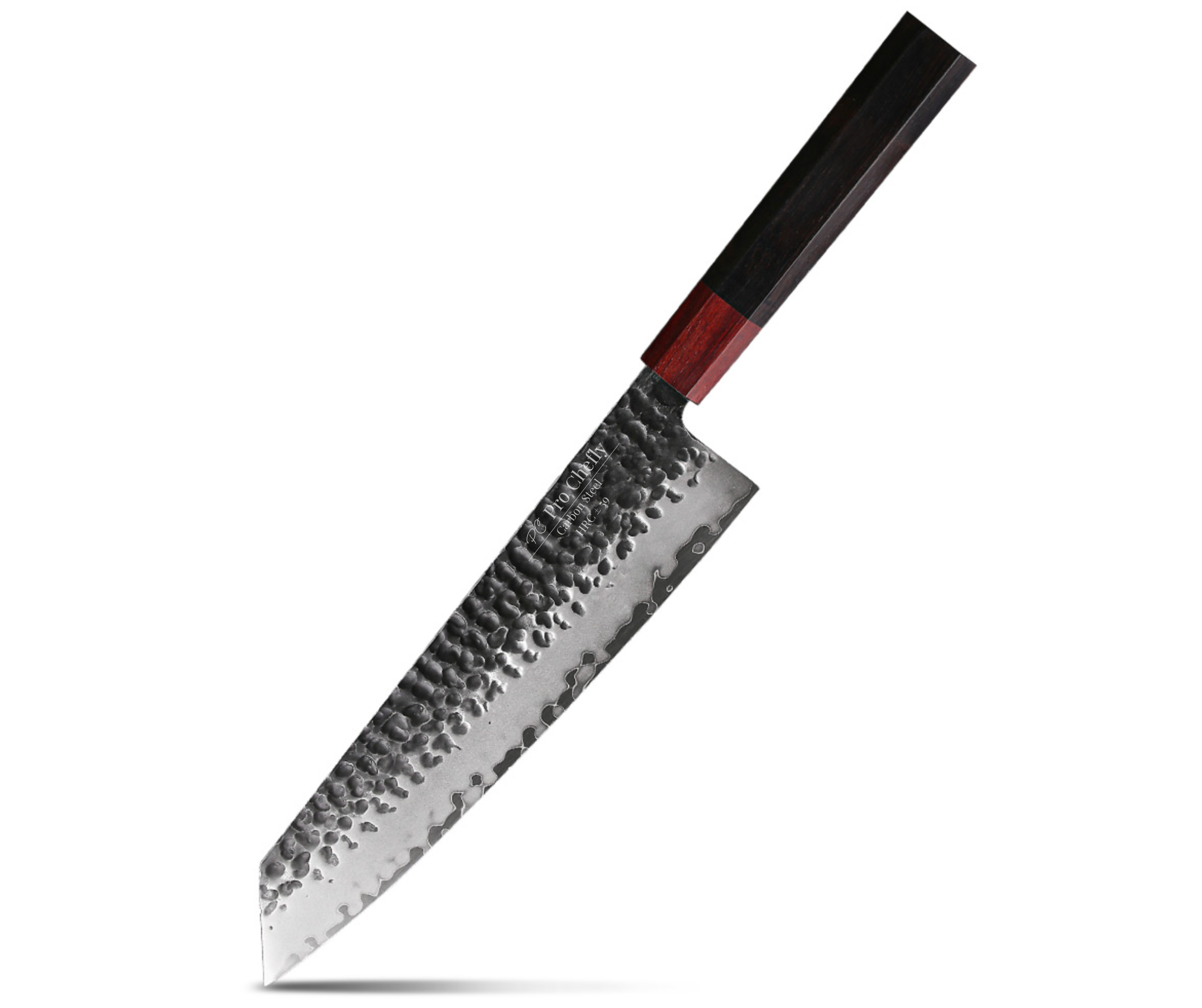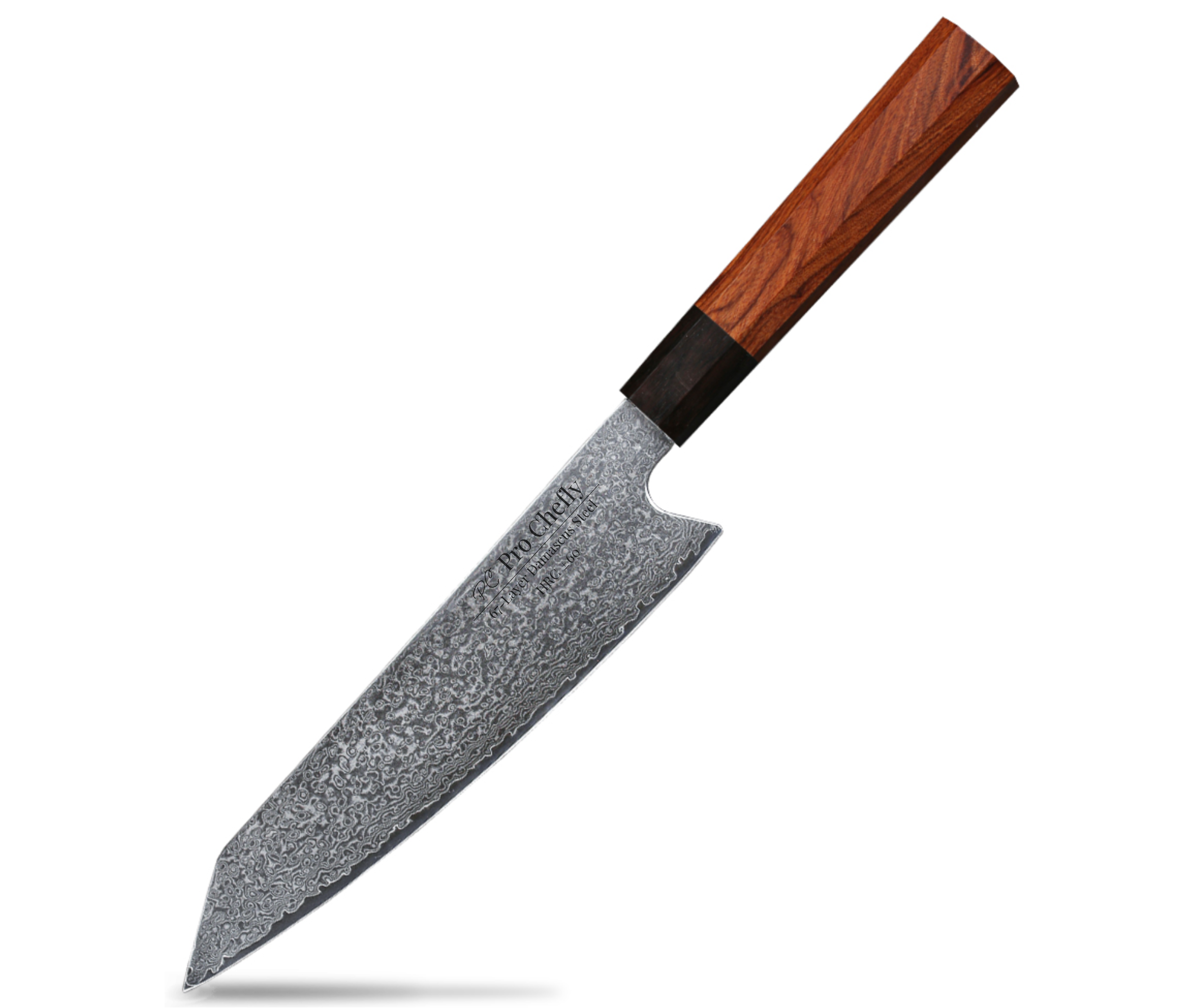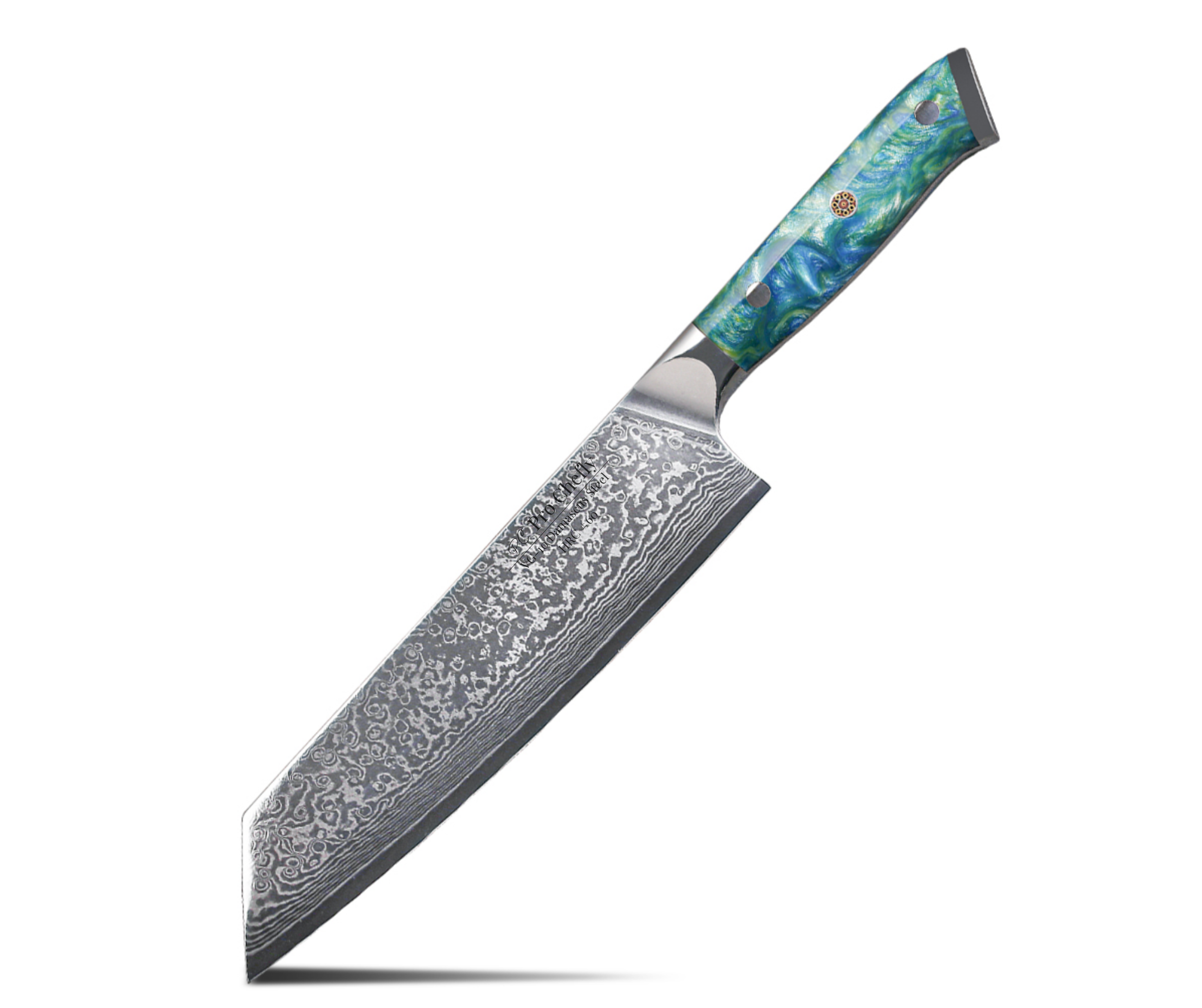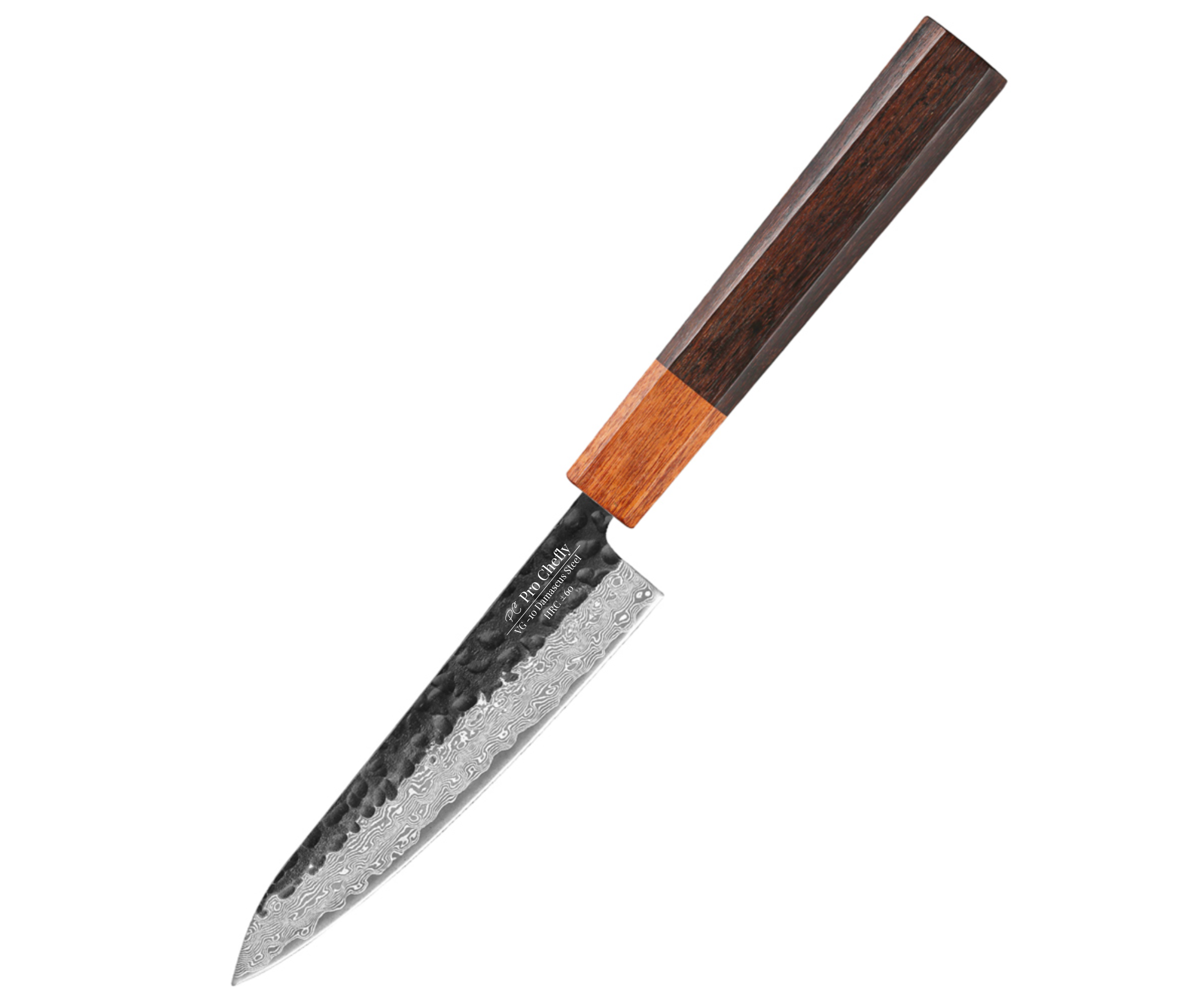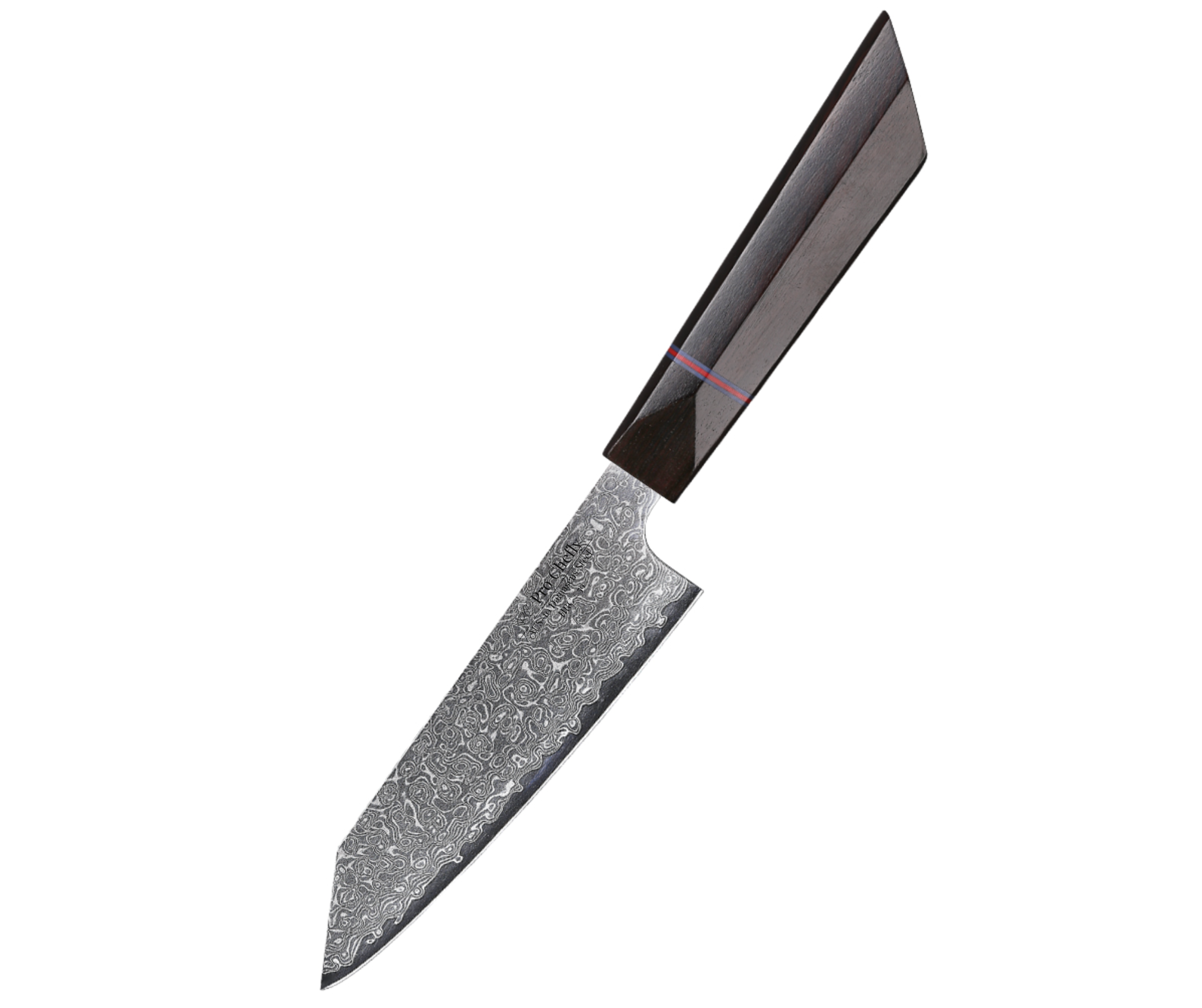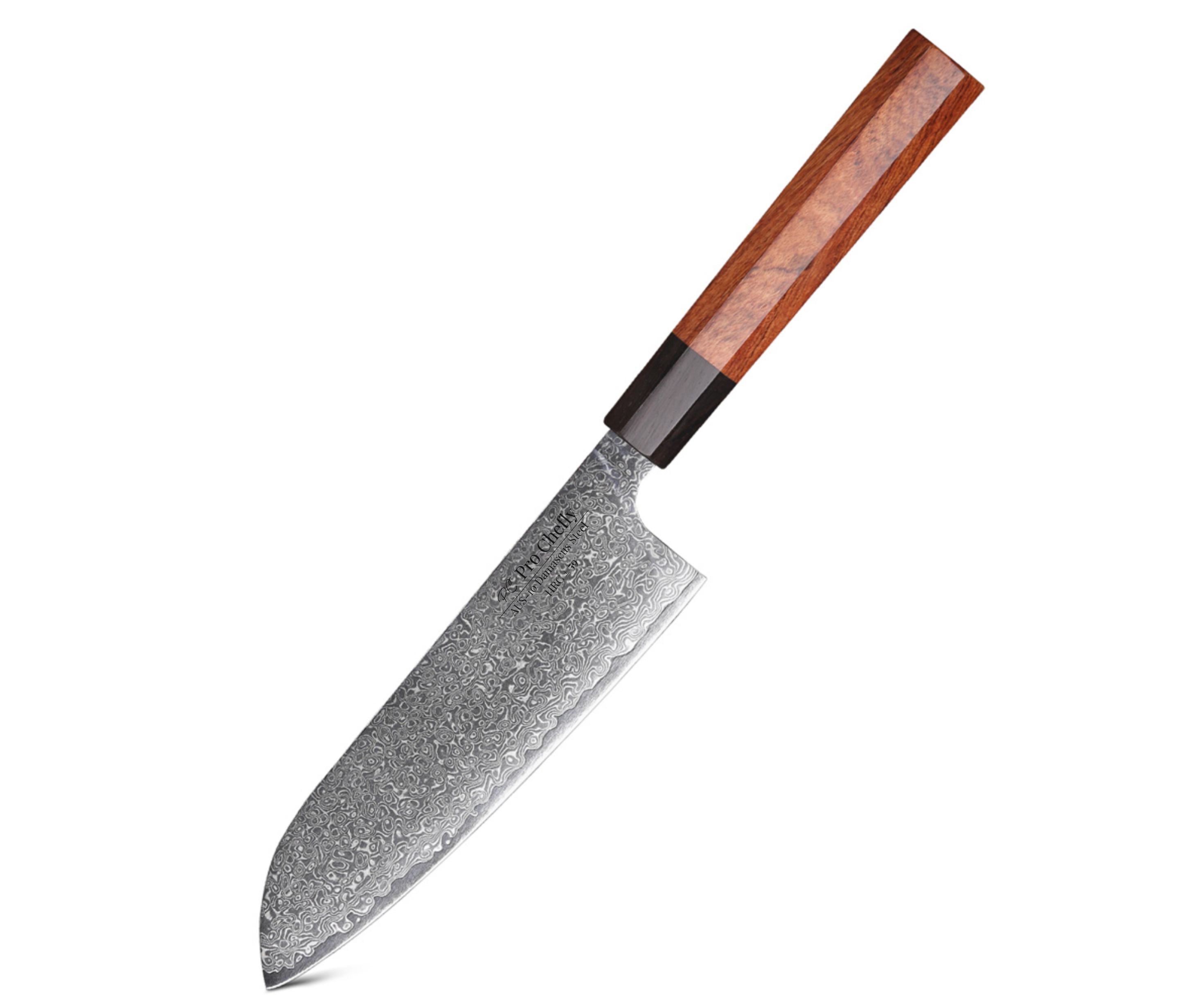Chef’s Overview
Dear Chefs, the holidays bring feasts, family, and let’s be honest—plenty of slicing, carving, and chopping. But when it comes to your first serious investment knife, the question always comes up: should it be a Gyuto or a classic Chef Knife? Both are workhorses, both can last a lifetime, but the right choice depends on how you cook—and how you cut.

The Knife Debate That Defines Every Kitchen
There’s a reason the Gyuto and Chef Knife are often compared—they share similar shapes, lengths, and versatility. Yet, as we discussed in Gyuto vs Chef Knife – Cutting Through the Myths This Halloween, the difference lies in philosophy. The Gyuto, born from Japanese precision, is about balance and finesse. The Western Chef Knife, on the other hand, thrives on weight and power—perfect for the heavy holiday prep ahead.
The Gyuto: Precision and Poise
A Gyuto, like the 8" VG-10 Damascus Gyuto or 8" AUS-10 Damascus Gyuto, is crafted for control. Its thinner blade allows for cleaner cuts and less resistance, especially on delicate ingredients like herbs, seafood, or tender meats. When preparing your holiday roasts or slicing vegetables for stuffing, that level of precision keeps textures intact and flavors pure.
The Chef Knife: Power and Reliability
Western-style Chef Knives—such as the 8" VG-10 Damascus Chef Knife—are slightly thicker with a curved belly, designed for rocking motions and durability. If you’re tackling thick root vegetables, trimming brisket, or prepping hearty roasts, this knife’s strength and heft give it an edge in handling dense ingredients.
Why Steel Matters in the Holidays
Holiday feasts mean hours of prep, and the steel you choose can make or break the experience. As mentioned in How VG-10 Steel Balances Edge Retention and Durability, VG-10 and AUS-10 Damascus steels are known for staying razor-sharp even after long cooking sessions. They’re also resistant to rust and chipping—because the only thing that should be dull at the holidays is your uncle’s jokes.
Damascus Layers: A Functional Beauty
Beyond aesthetics, the layered Damascus finish on both the 8" VG-10 Damascus Chef Knife and 8" VG-10 Damascus Gyuto strengthens the blade and enhances food release. That means fewer stuck slices of squash, fewer smears on your carving board, and smoother prep for presentation-ready dishes.
Practical Uses for Each Knife During Holiday Prep
When to Reach for the Gyuto
-
Thinly slicing cooked turkey, ham, or prime rib
-
Dicing herbs and aromatics for stuffing or gravy
-
Chopping root vegetables for soups and sides
-
Creating paper-thin citrus or apple slices for garnishes
When to Reach for the Chef Knife
-
Breaking down large cuts of meat
-
Cutting dense produce like potatoes or turnips
-
Chopping onions, celery, and carrots for mirepoix
-
Prepping holiday breads and rolls before baking
The Ideal Pair for a Chef’s Holiday Arsenal
Dear Chefs, if you’re serious about elevating your holiday prep, the real answer isn’t which one—it’s both. The 8" VG-10 Damascus Gyuto gives you that surgical precision, while the 8" VG-10 Damascus Chef Knife provides unmatched power and weight. Together, they cover every cut from start to serve. For smaller detail work, round out your set with the 5" AUS-10 Damascus Petty Knife—perfect for trimming garnishes or delicate carving touches.
For more guidance on knife selection and technique, explore Western vs Japanese Chef Knives: Which is Better for You and Why Chefs Choose Damascus Steel Knives for Precision.
The Final Cut – Your First Knife, Your First Legacy
Every great chef remembers their first real knife—the one that taught them how to respect the craft. This holiday season, whether you choose the Gyuto for its grace or the Chef Knife for its grit, make it an investment that lasts beyond the feast. Because the right knife doesn’t just make cooking easier—it makes it unforgettable.
Knife Collections
Shop the latest in Pro Chefly Damascus Knives
Chef's Notes
Stay up to date with the latest kitchen stories and recipes

- December 05, 2025
Dear Chefs, the holidays deserve a dish that feels slow, soulful, and unforgettable — and few things capture that spirit...

- November 30, 2025
Dear Chefs, there is something unmistakably comforting about bread pudding in November — the way the custard soaks into the...

- November 25, 2025
Dear Chefs, there is something special about roasted carrots in the fall — the way they caramelize, the way their...

- November 20, 2025
Dear Chefs, there is something magical about fall stuffing, especially when pumpkin and sage join the party. The aroma alone...

- November 15, 2025
Dear Chefs, November has a rhythm of its own — a slower pace, a softer light, and a craving for...

- October 31, 2025
Dear Chefs, fall baking is a ritual — the scent of cinnamon in the air, pecans roasting low and slow,...
- Choosing a selection results in a full page refresh.
- Opens in a new window.
